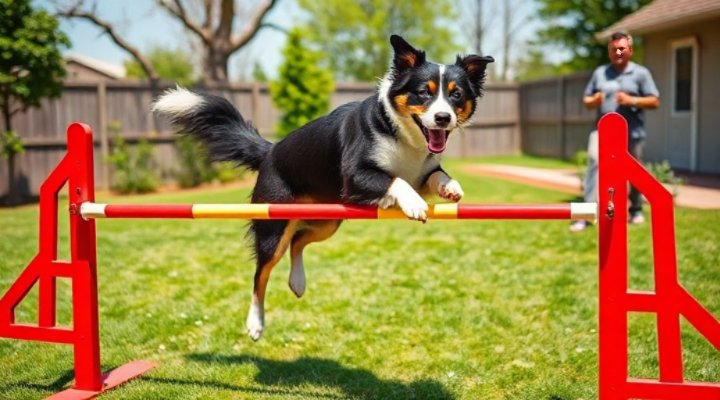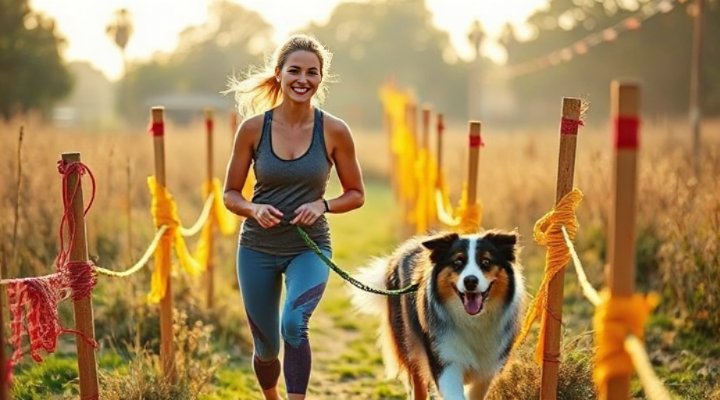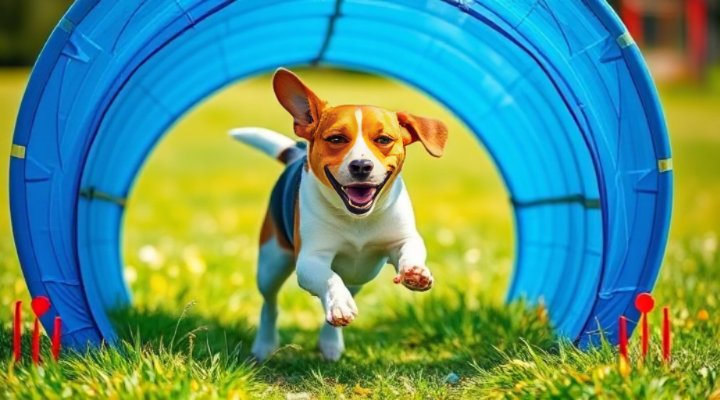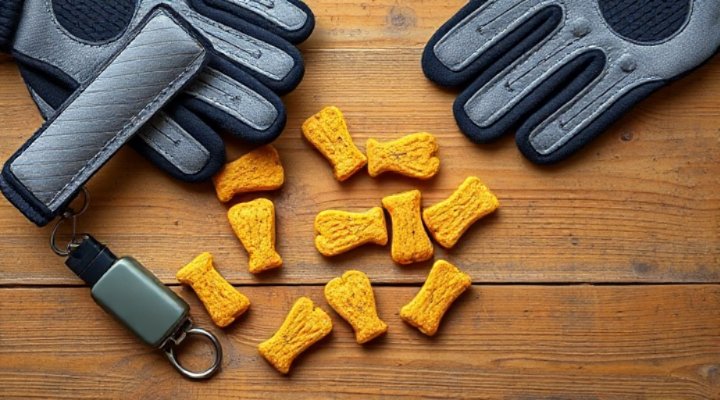Dog agility training for beginners is one of the most rewarding activities you can do with your canine companion. Not only does it provide excellent physical exercise, but it also strengthens your bond and gives your dog valuable mental stimulation. According to the American Kennel Club, agility training can improve a dog’s confidence and obedience skills.

Getting Started with Dog Agility Training
Before you begin agility training with your dog, there are some essential basics to consider. First and foremost, your dog should have mastered fundamental obedience commands like ‘sit,’ ‘stay,’ and ‘come.’ If you’re still working on these, our guide on basic dog commands can help.
The beauty of dog agility for beginners is that you don’t need fancy equipment to start. Many household items can be repurposed – a broomstick between two chairs makes a perfect jump, and a hula hoop can become a makeshift tunnel. The key is to keep initial sessions short (5-10 minutes) and always end on a positive note.

Essential Agility Equipment for Beginners
As you progress in your dog’s agility training, you might want to invest in some basic equipment. Here’s what we recommend starting with:
- Adjustable jumps (can be made with PVC pipes)
- Collapsible tunnel (look for beginner-friendly shorter versions)
- Weave poles (start with just 3-4 poles spaced widely apart)
- Pause table or box (a raised platform where dogs must stop)
Remember, the goal of agility training for beginners isn’t perfection – it’s about having fun while building skills. If you’re interested in more structured training, check out our article on finding agility classes near you.

Training Techniques for Beginner Agility Dogs
Positive reinforcement is the golden rule of dog agility training for beginners. Use high-value treats, enthusiastic praise, and favorite toys to motivate your dog. Break each obstacle down into small, manageable steps, and always reward attempts – even imperfect ones.
Here’s a simple progression for teaching jumps:
- Start with the pole on the ground
- Reward any interaction with the pole (sniffing, stepping over)
- Gradually raise the height in small increments
- Add your verbal cue (‘jump’ or ‘over’) as your dog understands
The University of Pennsylvania’s Veterinary School emphasizes that agility training should always be tailored to your dog’s physical abilities and limitations.

Common Challenges in Beginner Agility
Many beginners encounter similar hurdles when starting agility training with their dogs. Here are solutions to common issues:
Problem: Dog is afraid of the tunnel
Solution: Make it shorter, use treats to lure, and celebrate small progress
Problem: Dog knocks over weave poles
Solution: Space poles wider apart initially and use guide wires
Problem: Dog loses interest
Solution: Keep sessions short, use higher-value rewards, and make it a game
If you’re dealing with behavioral challenges, our article on solving dog behavior problems might be helpful.

Taking Your Agility Training to the Next Level
Once you and your dog have mastered the basics of agility training, you might consider joining a local club or even trying competition. Many areas have ‘fun matches’ where beginners can experience the thrill of a course without pressure.
Remember that every dog progresses at their own pace. Some breeds like Border Collies may take to agility naturally, while others like Bulldogs might need more encouragement. The key is adapting the training to your dog’s abilities and keeping it enjoyable.
For more advanced training techniques, check out our guide on positive reinforcement methods that work well for agility training.
Safety Considerations for Agility Training
While dog agility is generally safe, beginners should keep these precautions in mind:
- Always warm up your dog with light exercise first
- Avoid high jumps for puppies under 12 months
- Watch for signs of fatigue or overheating
- Use non-slip surfaces whenever possible
- Consult your vet if you have concerns about your dog’s fitness
Related keywords: beginner dog agility, dog agility course setup, agility training for small dogs, how to train a dog for agility, DIY dog agility equipment

